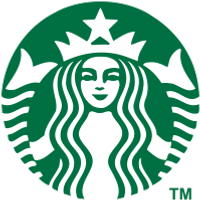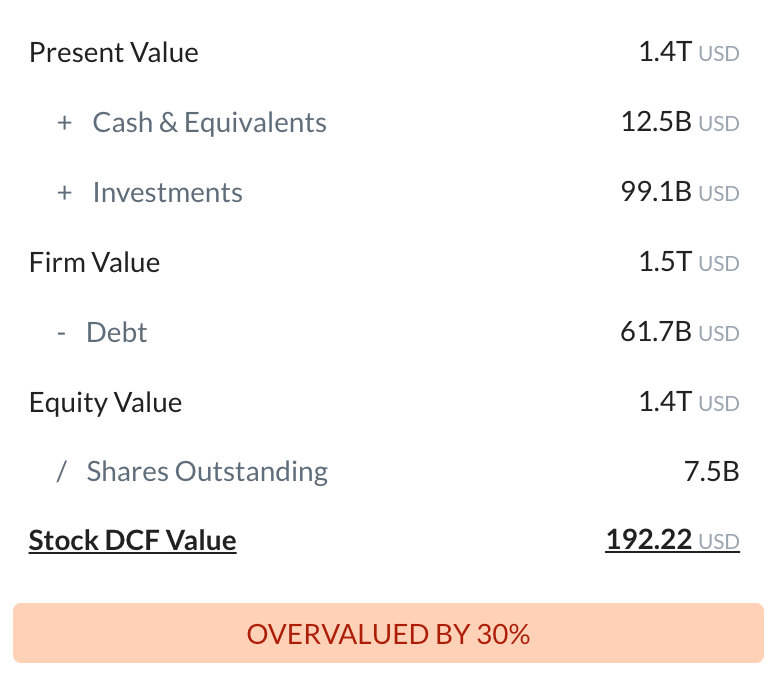
Starbucks Corp
NASDAQ:SBUX

Intrinsic Value
The intrinsic value of one
 SBUX
stock under the Base Case scenario is
83.46
USD.
Compared to the current market price of 80.68 USD,
Starbucks Corp
is
Undervalued by 3%.
SBUX
stock under the Base Case scenario is
83.46
USD.
Compared to the current market price of 80.68 USD,
Starbucks Corp
is
Undervalued by 3%.
The Intrinsic Value is calculated as the average of DCF and Relative values:

Valuation History
Starbucks Corp

Fundamental Analysis

A slowdown in Starbucks’ key growth market of China—especially if economic pressures dampen discretionary spending—could stall the company’s global expansion ambitions and weigh heavily on future revenue.
Starbucks’ robust brand equity and pricing power enable it to maintain premium coffee margins, even amid competition, supporting stronger profitability than peers in the specialty café space.

Revenue & Expenses Breakdown
Starbucks Corp

Balance Sheet Decomposition
Starbucks Corp

| Current Assets | 7.3B |
| Cash & Short-Term Investments | 4B |
| Receivables | 1.2B |
| Other Current Assets | 2.1B |
| Non-Current Assets | 24.6B |
| Long-Term Investments | 676.6m |
| PP&E | 18B |
| Intangibles | 3.5B |
| Other Non-Current Assets | 2.4B |
Free Cash Flow Analysis
Starbucks Corp

| USD | |
| Free Cash Flow | USD |
Earnings Waterfall
Starbucks Corp

|
Revenue
|
36.1B
USD
|
|
Cost of Revenue
|
-26.7B
USD
|
|
Gross Profit
|
9.4B
USD
|
|
Operating Expenses
|
-4.7B
USD
|
|
Operating Income
|
4.8B
USD
|
|
Other Expenses
|
-1.2B
USD
|
|
Net Income
|
3.5B
USD
|
SBUX Profitability Score
Profitability Due Diligence

Starbucks Corp's profitability score is 47/100. The higher the profitability score, the more profitable the company is.

Score
Starbucks Corp's profitability score is 47/100. The higher the profitability score, the more profitable the company is.
SBUX Solvency Score
Solvency Due Diligence

Starbucks Corp's solvency score is 49/100. The higher the solvency score, the more solvent the company is.

Score
Starbucks Corp's solvency score is 49/100. The higher the solvency score, the more solvent the company is.
Wall St
Price Targets
SBUX Price Targets Summary
Starbucks Corp

According to Wall Street analysts, the average 1-year price target for
 SBUX
is 109.32 USD
with a low forecast of 76.76 USD and a high forecast of 131.25 USD.
SBUX
is 109.32 USD
with a low forecast of 76.76 USD and a high forecast of 131.25 USD.
Dividends
Current shareholder yield for  SBUX is
.
SBUX is
.
Shareholder yield represents the total return a company provides to its shareholders, calculated as the sum of dividend yield, buyback yield, and debt paydown yield. What is shareholder yield?
The intrinsic value of one
 SBUX
stock under the Base Case scenario is
83.46
USD.
SBUX
stock under the Base Case scenario is
83.46
USD.
Compared to the current market price of 80.68 USD,
 Starbucks Corp
is
Undervalued by 3%.
Starbucks Corp
is
Undervalued by 3%.

























































 You don't have any saved screeners yet
You don't have any saved screeners yet